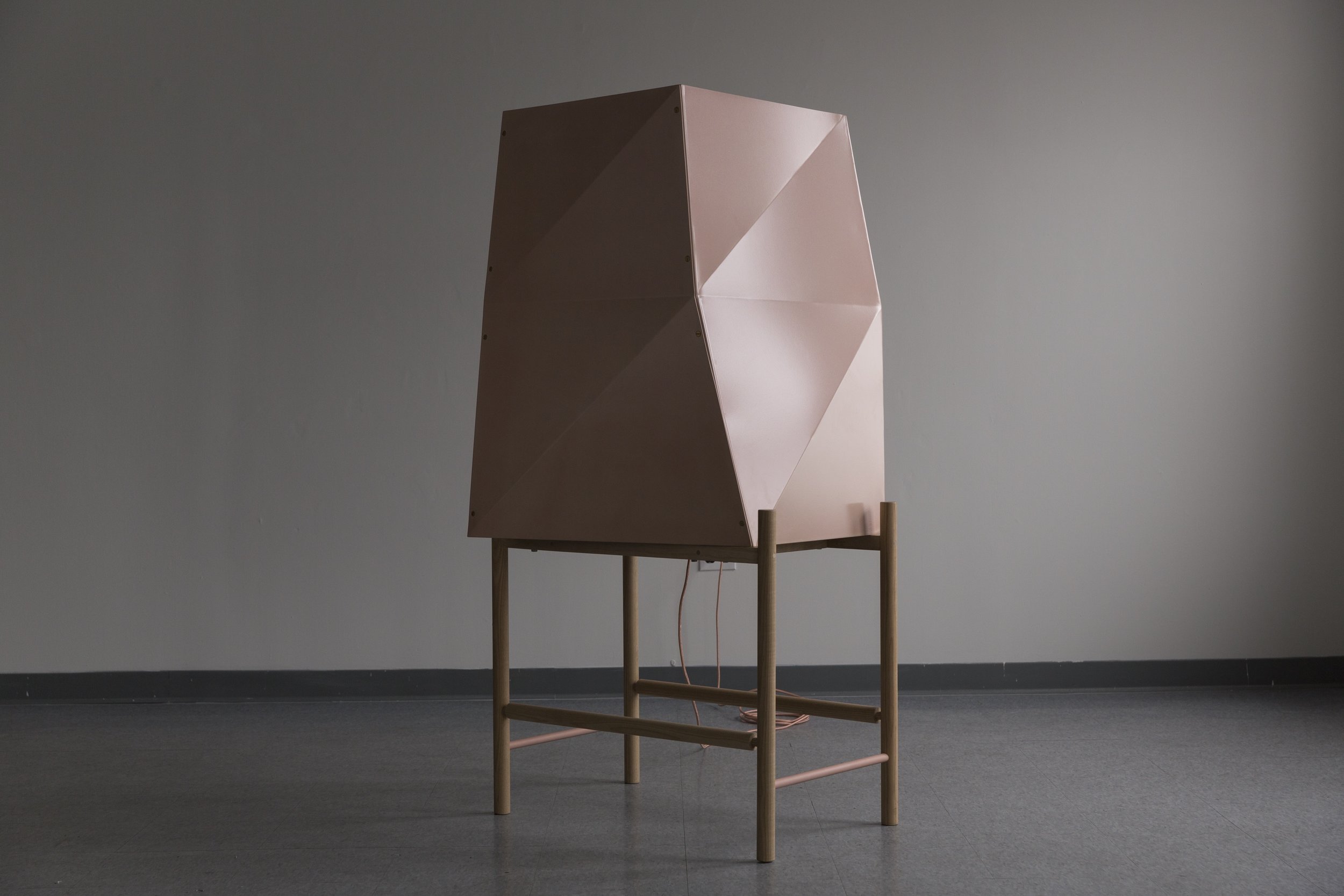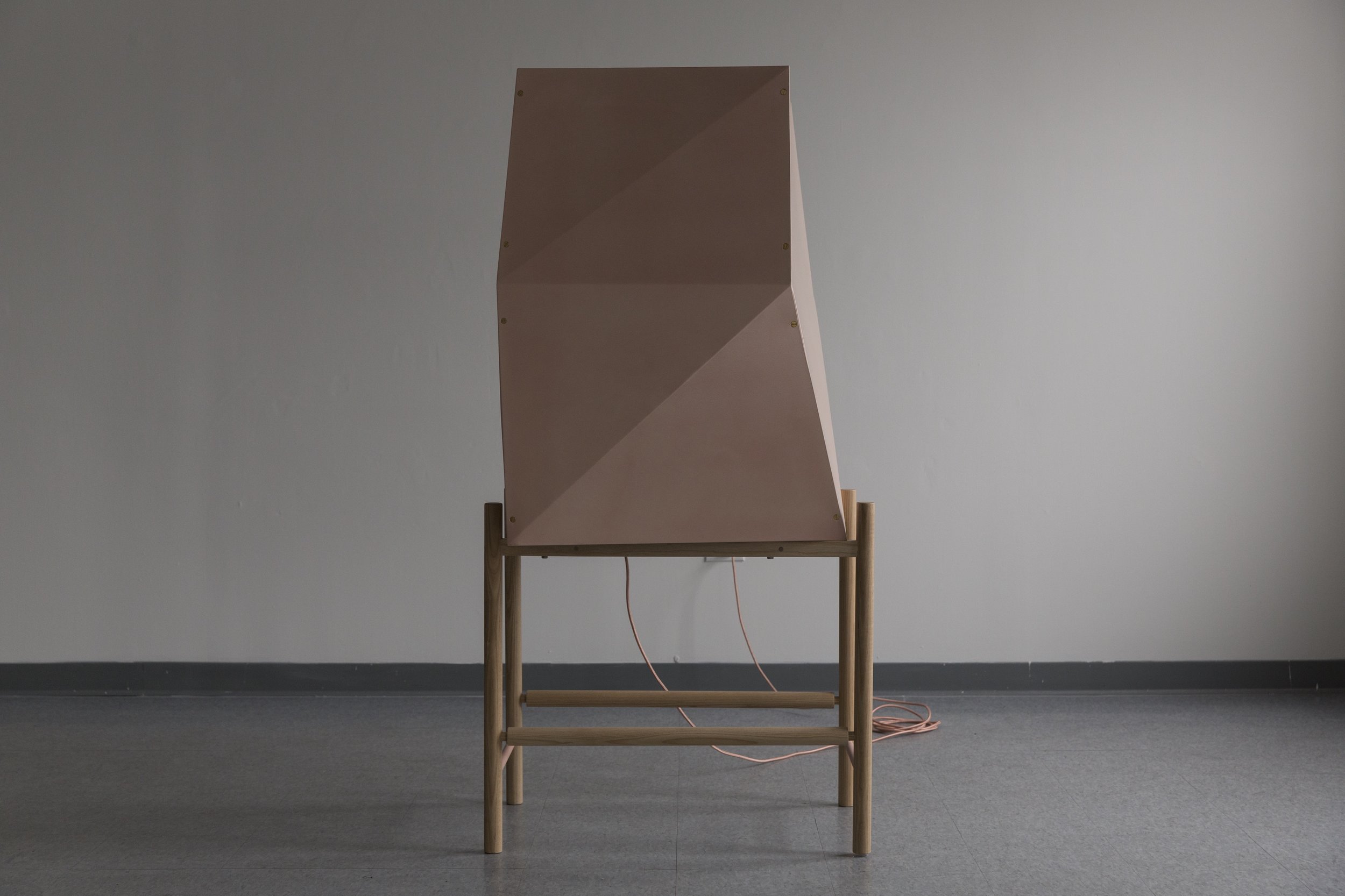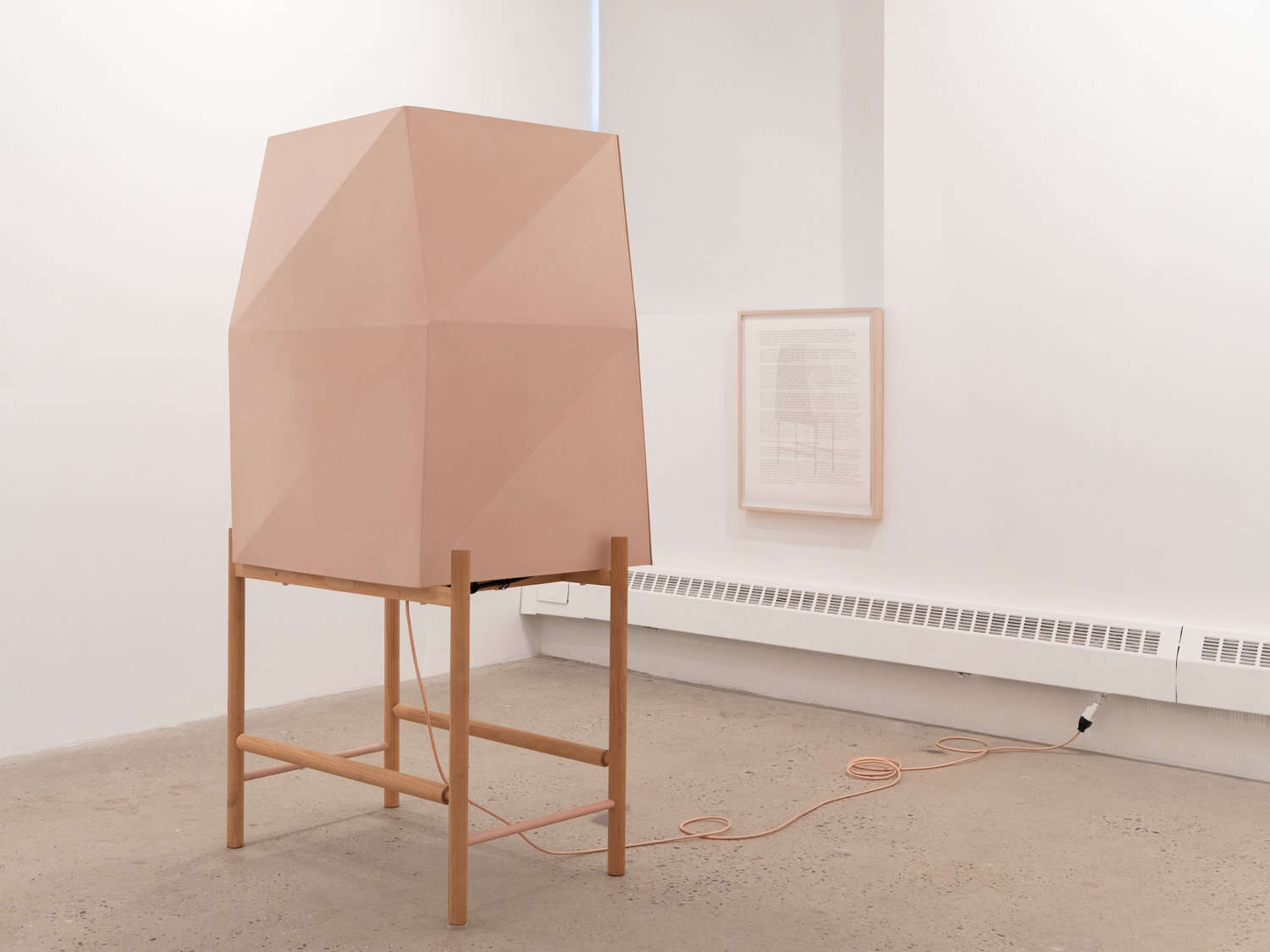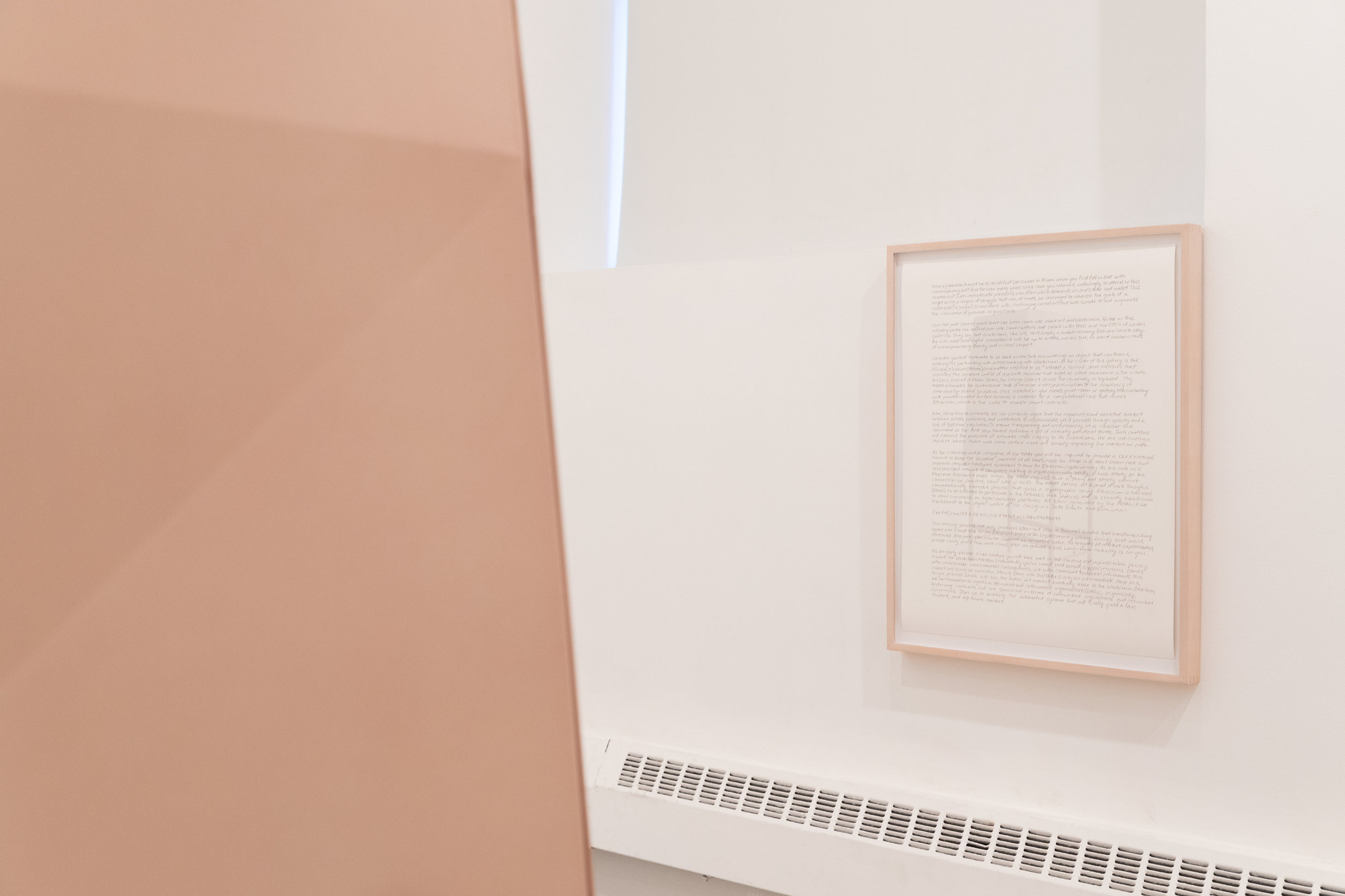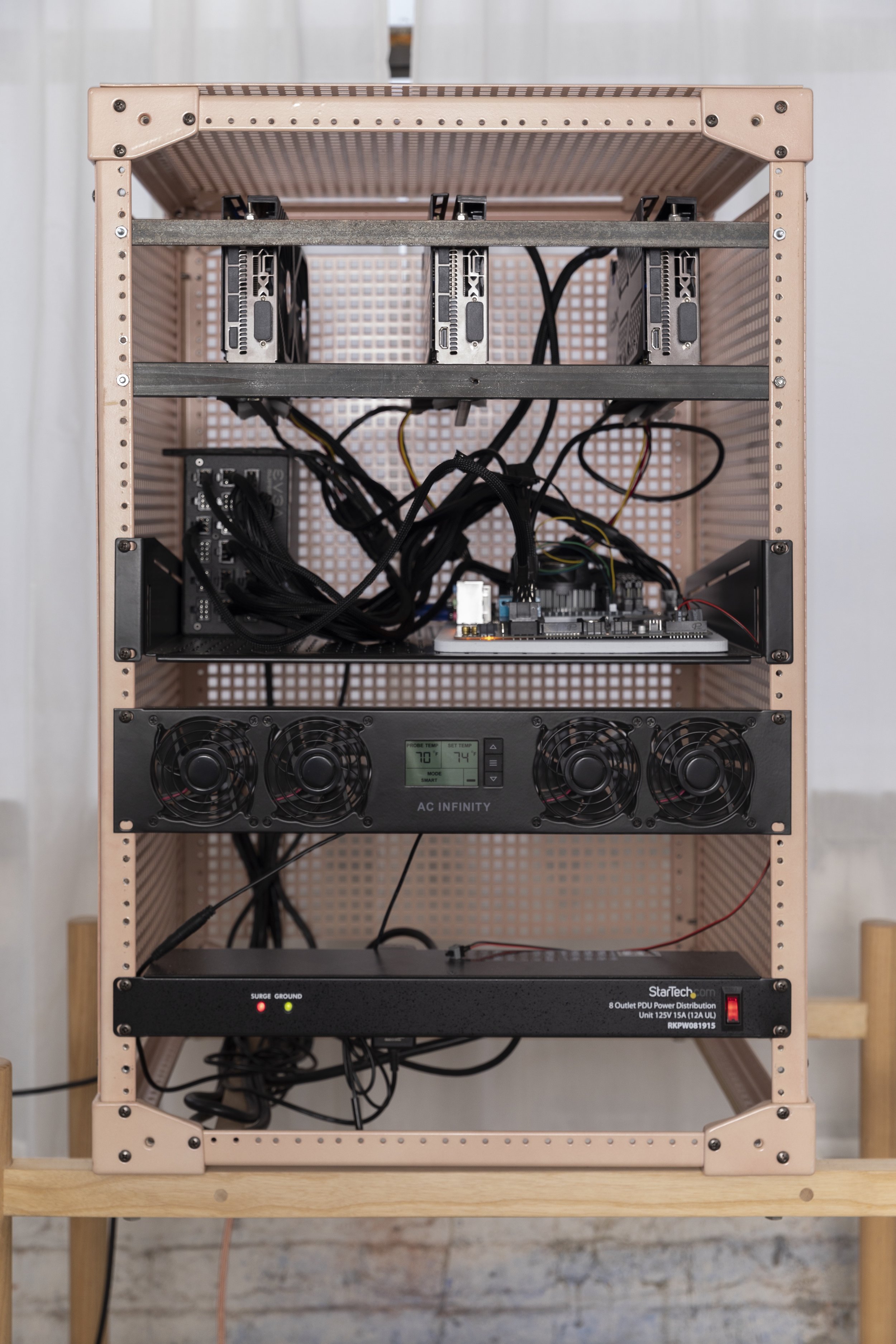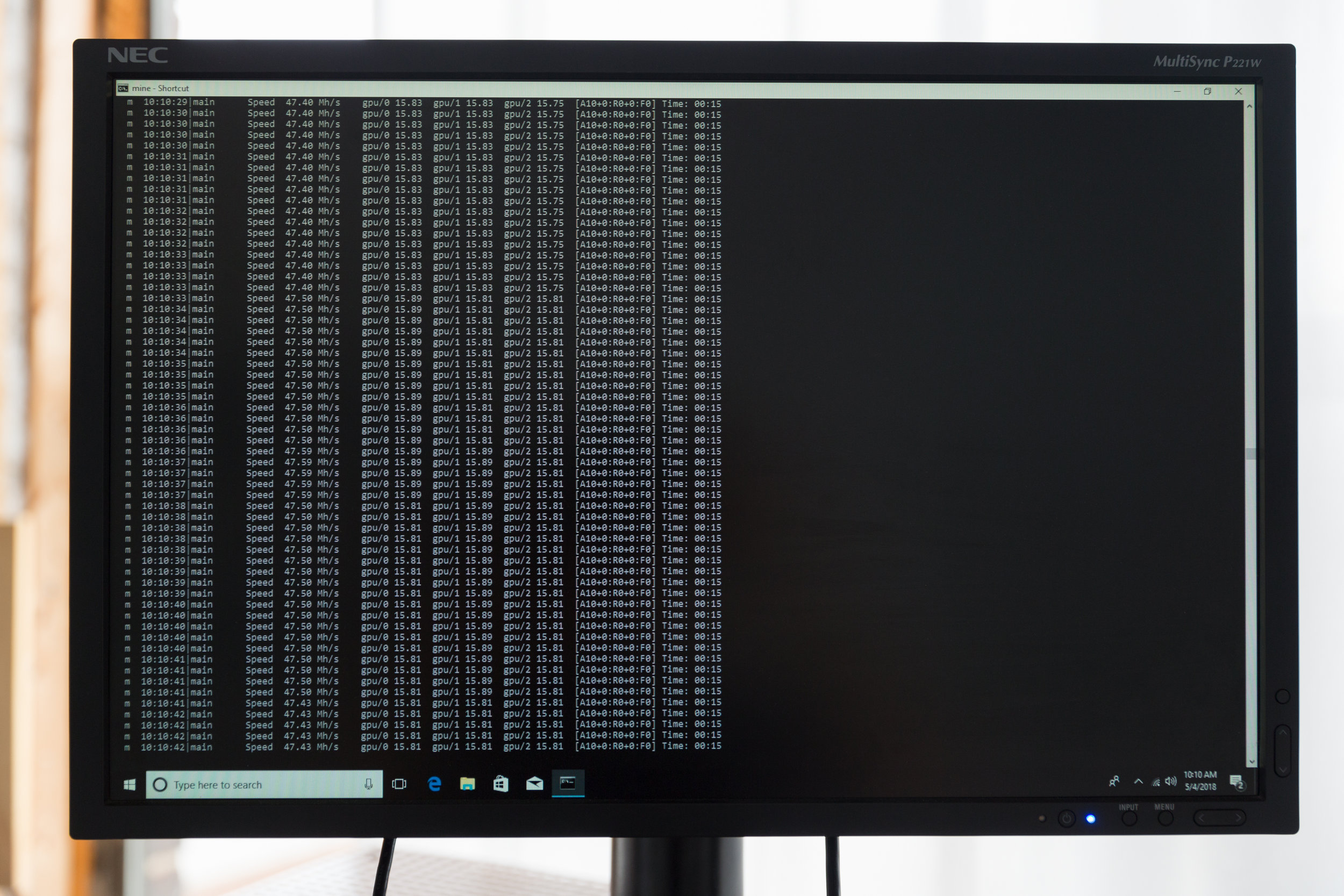The Mining Museum, 2018, steel plate and mesh, wood, computer server rack, Ethereum mining rig (motherboard, three graphics processing units (GPUs), battery, hard drive, Windows OS), smart contract, 60 x 27 x 17 inches (152 x 69 x 43 cm)
The Mining Museum is a faceted steel enclosure created with a Miami-based design firm to evoke an architecture common to contemporary art institutions, built during the global art market boom of the past two decades. The interior supports a computational corrective to an asymmetric and unregulated market. The Mining Museum contains a high-powered computer that processes cryptographic “hashes”, adding value to the blockchain network through its authentication protocols. The Mining Museum mines Ethereum because it provides programmable smart contracts – flexible, enforceable programs that ensure a transparent account of transactions. This model of stakeholding is derived from the artist’s resale royalties contract as outlined by Seth Siegelaub and Robert Projansky in 1971. Their Artist's Reserved Rights Transfer and Sale Agreement was designed to orient the afterlife of an artwork to mutuality and stewardship as it circulated through the art system. The smart contract connected to The Mining Museum automates resale royalties, while also outlining terms for the continued mining of Ethereum. These conditions encourage greater mutuality between art producers and collectors/custodians. Ultimately, this project allows content producers to capture derivative value from their work in perpetuity.
